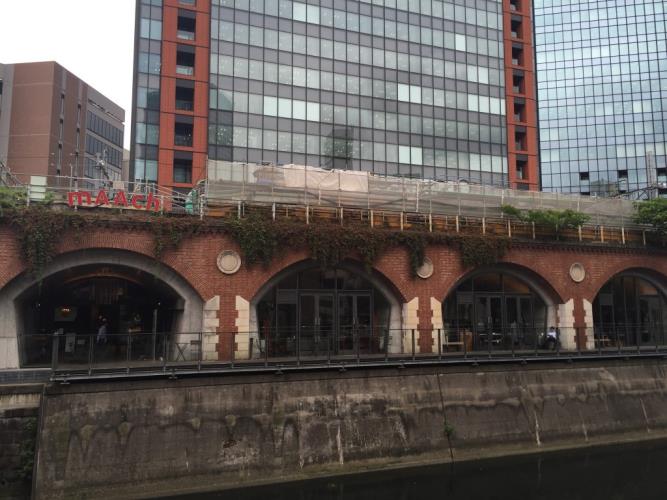Yap loves design, travel and everything beautiful in life. He writes for various media about travel and design and has published works, including Wander Bhutan and Myanmar Odyssey. Formerly publisher of Lonely Planet (China Office), Yap is now Chief Content Officer of Youpu Apps, a Beijing based travel app company.

Akihabara in Tokyo is a paradise for the otaku (diehard fan) and I usually won’t go to that area. Once you leave the metro station, shops along the streets there are selling various gadgets and electronics. Cute “maids” dressed in princess costumes are ready to tout for business. With a cluster of maid cafés, Akihabara can satisfy all of otaku‘s imagination of cute girls.
I visited Akihabara this time for the contemporary art. 3331 Arts Chiyoda is located near Akihabara. The site used to be a defunct high school campus and has been revitalised as an arts precinct. The then classrooms now house galleries and tech companies. Apart from the people, a city’s most interesting subject to look into is how its spaces are used. How a rapidly developed city reuses existing resources not only reveals how environmentally-friendly it is, but also shows the innovation and taste of its people. 3331 Arts Chiyoda is a privately run arts hub. The management has the right to choose tenants. Not only artists are chosen, but also some technology companies. This is in the hope that professionals from different industries can work together in the same space and create more crossover ideas.
Revitalising old buildings is nothing new. Old train stations and defunct factories are turned to art museums in Paris and London, and they are just one of the few excellent examples, among others. These buildings are transformed and preserved because of their historical and aesthetic values. But 3331 was just an ordinary campus. Demolition of the campus would definitely generate more commercial values than to keep it. However, the stakeholders preferred keeping the whole site and rented the spaces to private galleries. It’s not easy to run a not-so-profitable arts hub in Tokyo, given land prices are high in the city. I found such initiative admirable.
I felt that when I was visiting the galleries, I was actually visiting a high school in Japan. The entire space has intertwined the past and the present. When I saw the typical rectangular school sinks, I kept having flashbacks of my school life. Keeping a campus is also to safeguard the memories of pursuing knowledge in schooldays. After the visit, I sat under an old tree at the field near the entrance and listened to the sound of leaves rustling in the breeze. The life of this place, both tangible and intangible, is sustained.
Located adjacent to Akihabara and along Kandagawa, Kanda Manseibashi was built in 1912 and used to be Tokyo’s busiest transport hub. The hustle and bustle of the train station had long gone owing to the expansion of the railway network in Japan. In 1943, the station was abandoned. The space underneath the railway bridge has already transformed by its owner East Japan Railway Company into a stylish commercial space mAAch ecute.
Most parts of the original structure of the railway station are kept, including a row of eye-catching red-brick arches and exterior walls. The concourse and the platforms now house boutiques and shops. Quality secondhand furniture and artwork made by Japanese artists are on display there. The venue also has cafés and restaurants. Shops are small but attractive, and they are full of character. There is a shop called Library, which not only sells books but has also designed an “old map” to let travellers to navigate and get a feel of the old times of the area. A good revitalisation plan will not totally separate the old and the new. Instead, it lets people to see the transition and transformation from the past to the present. Step on the 100-year-old staircases and ascend to the second floor, you will find the then platform area now houses a café. You can even see trains rattling down the track through a glass screen in the café. The experience is definitely unique.